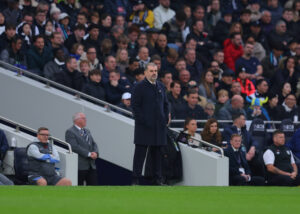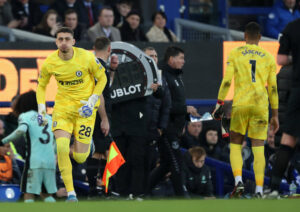Welcome to the new series of articles from the Last Word on Football. This series looks at the grounds that are sadly no longer with us. Grounds that are famous not only in their particular country but also around the world. Grounds that will always hold a special place in the hearts of a particular team’s supporters and fans of football alike. Many will love them, some may hate them; however, they could never be forgotten.
Today we look at the West Ham‘s former ground. Fans experienced many ups and downs at the Boleyn Ground. Drama, aggression and ferocity was part of the appeal here and it was a sacred place in the heart of east London.
Never to Be Forgotten Grounds: Boleyn Ground
Opening
Despite forming in 1895 as Thames Ironworks, the club didn’t play at the Boleyn Ground until the 1904-05 season.
Before making the Boleyn Ground their permanent home, The Hammers played at three different venues around east London. The club spent their first two years at Hermit Road, Canning Town between 1895-97. The club then spent a few months in 1897 at Browning Road and settled at the Memorial Grounds, West Ham.
However, the club could no longer afford to play at the Memorial Grounds after seven years and managed to find space in Upton Park, Newham to build the original Boleyn Ground.
The Boleyn Ground opened for the 1904-05 season and was originally named ‘The Castle’ as Anne Boleyn’s family castle sat in the background of the initial stadium. The stadium was humble and certainly a far cry from the modern ground it became.
It was built in seven weeks over the summer in 1904 and the cramped nature perhaps wasn’t built to hold swarms of football fans, but the intense closeness of the ground was one of the defining features of the Boleyn.
Only two stands stood initially. One to the west, in front of the famous Green Street, and one, a small terrace behind a goal. Basic changing rooms lined the pitch at the opposite end.
The newly formed West Ham United, an amalgamation of numerous local teams, got off to the best possible start at their new ground. They thumped their ferocious rivals, Millwall 3-0 in front of a 10,000 strong crowd on 1st September 1904.
Early Days
West Ham began to see growing crowds throughout the early 20th century after the Boleyn was built.
One of the biggest earlier matches at the ground took place in the FA Cup against Manchester United in 1911. West Ham already saw off established teams Nottingham Forest and Preston North End in the first two rounds at the Boleyn and United came next.
An estimated 27,000 crammed into the ground, which supposedly could only hold 25,000 at the time. The Hammers won and beat United 2-1 with Tommy Caldwell scoring in the final minutes to see the Hammers through.
In 1919, due to the club joining the Football League and with more demand to watch the Hammers, a new east stand was built. The ground expanded again in 1925 when the existing west stand expanded to include further terracing. These developments lifted the capacity to 45,000 as larger crowds went to the Boleyn.
West Ham and the Boleyn ground soon became a key part of working-class identity in east London in the early 20th century. Crowds as high as 44,810 and 43,528 against Birmingham and London rivals Charlton in 1933 highlighted the growth of popularity of West Ham and the importance of the Boleyn to the local area.
Classic Games
West Ham – 8 Sunderland – 0 (1968)
A result which showed the Hammers’ golden era performing at their clinical best.
World Cup winner Geoff Hurst starred in the Hammers biggest ever top-flight victory. The striker netted six times against Sunderland in 1968, almost 60 years after Vic Watson did the same at the Boleyn in 1929.
West Ham legends all played their part in this victory in addition to Hurst. Future manager of the Hammers, Harry Redknapp, assisted two of Hurst’s goals. Trevor Brooking also got on the score sheet, while another World Cup winner, Bobby Moore bagged the second of the afternoon.
West Ham – 3 Eintracht Frankfurt – 1 (1976)
In the 1976 European Cup Winner’s Cup semi-final, West Ham trailed 2-1 going into the second leg. A tight loss away at Frankfurt gave the Hammers plenty to do on the return leg.
Accounts tell of horrible, wet, muddy conditions in east London that night; the game nearly got called off. However, the game went ahead and Hammers’ fans, and particularly Trevor Brooking, were glad it did.
Brooking scored an early second-half header, set up by Frank Lampard senior. Keith Robson extended the Hammers’ lead with a beautiful, curling striker into the top corner. Then, legend Brooking sealed one of the club’s greatest second-half performances; he cut inside the defender and passed in for United’s third. The Boleyn almost keeled over with deafening noise and charging fans as Brooking’s third hit the back of the net.
West Ham – 2 Wimbledon – 1 (2000)
This match did not carry huge meaning or significance. West Ham chased European qualification while Wimbledon fought relegation. However, Paulo Di Canio’s goal in this fixture became iconic and the flamboyant Italian’s striker remains one of the greatest Premier League goals.
A driven ball from right-back Trevor Sinclair fell perfectly on Di Canio’s right foot. From a tight angle, he proceeded to scissor kick audaciously into the far corner. His nonchalant moment and celebration will be forever remembered not just by Hammers’ fans, but by the majority of football fans.
West Ham – 2 Ipswich Town – 0 (2004)
Alan Pardew’s went back to the Boleyn trailing needing a win as they trailed 1-0 to Ipswich after the first leg. Both teams produced a blood and thunder display with chances aplenty at both ends.
Steve Lomas hit the post for West Ham in the first half; Darren Bent missed a host of chances for Ipswich. As the whistle blew for half-time, West Ham still faced elimination from the play-offs. But two second-half goals took the roof off the Boleyn.
Winger Matthew Etherington scored shortly after half time, smashing into the far corner after Michael Carrick‘s short corner. Etherington’s then took a shot which deflected to Christian Dailly who poked home for the Hammers second. The home section of the 34,002 crowed drove and roared the team to hold for the remainder of the half. West Ham secured their place in the 2004 play-off final.
West Ham – 2 Everton – 2 (2015)
One of the last and greatest moments at the Boleyn came just 18 months before the Hammers departed their home. An action-packed third-round FA Cup tie against Everton gave the east London faithful one of the best matches to savour under the lights.
After a drab first half, a flurry of activity in the second-half sprung the match into action. Enner Valencia opened the scoring for the Hammers, Aiden McGeady was sent off for Everton and the Toffees equalised with 10 minutes left.
After Romelu Lukaku‘s goal helped Everton take the lead in extra-time, it looked bleak for West Ham. But long-term servant Carlton Cole popped up with the equaliser with about five minutes left in the tie. The match went to penalties and more drama came.
With the penalty shoot-out tied at 8-8, cult hero Adrian produced a moment every keeper dreams of. The Spanish keeper faced off against opposite number Joel Robles, whose penalty smashed the underside of the bar. The keepers swapped places, Adrian whipped his gloves off, ran up and slotted the ball in the bottom corner, sending the Boleyn into raptures.
Closure
The final game of the 2015/16 season was played at the Boleyn Ground. West Ham beat Manchester United 3-2 in a dramatic and frantic game. Centre back Winston Reid scored a powerful header to win the game. It was the final goal at the ground and capped the club’s 112 years stay at the Boleyn.
A move to the London Stadium took place and the club began to play their matches at the former Olympic Stadium, Stratford at the beginning of the 2016/17 season.
While the club played their fixtures at the 60,000 seater stadium, the Boleyn Ground was demolished. Like any vacant space in and around London, the former stadium was turned into new-build apartments within two years of West Ham’s final game there.
Main Photo






